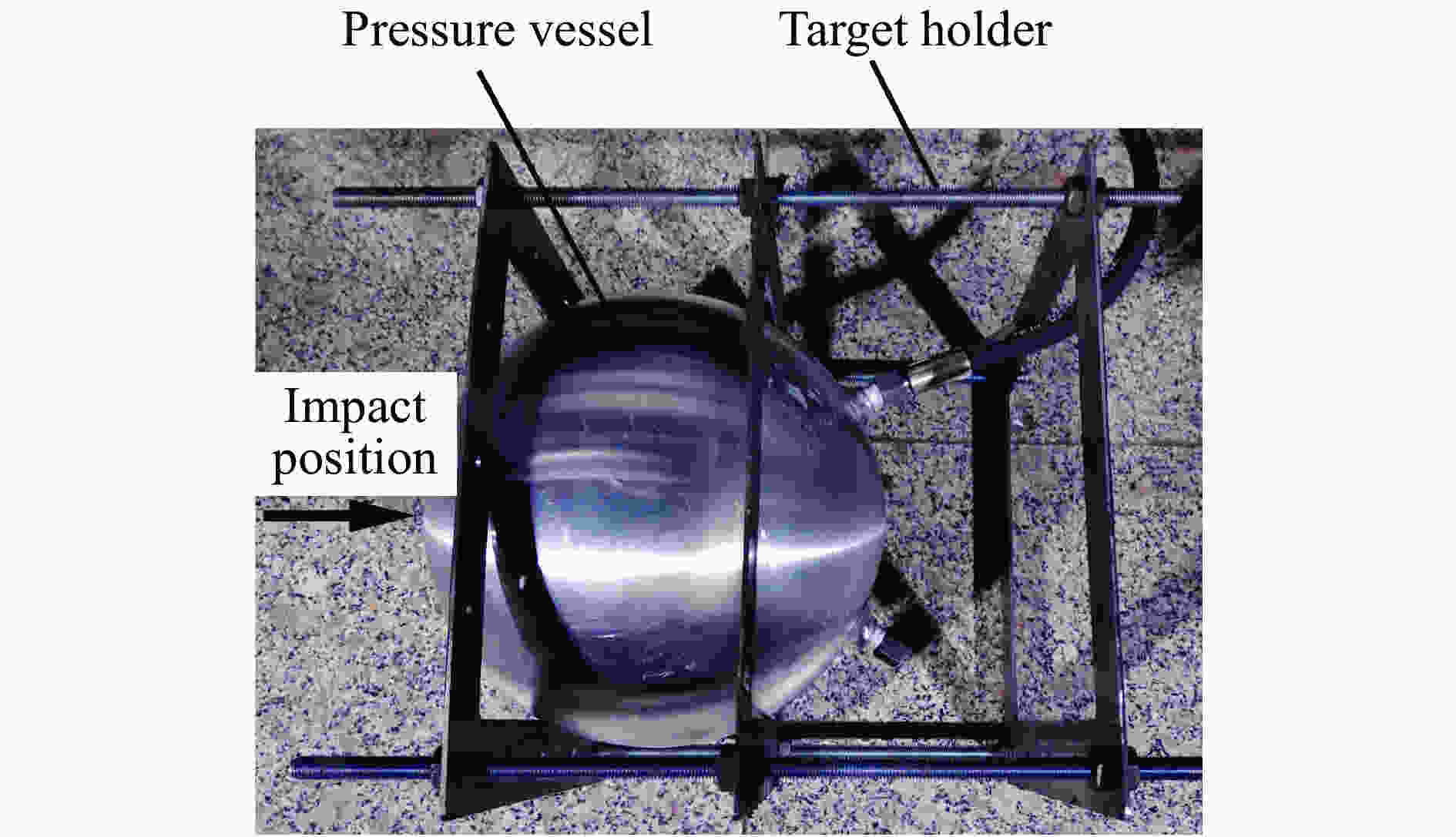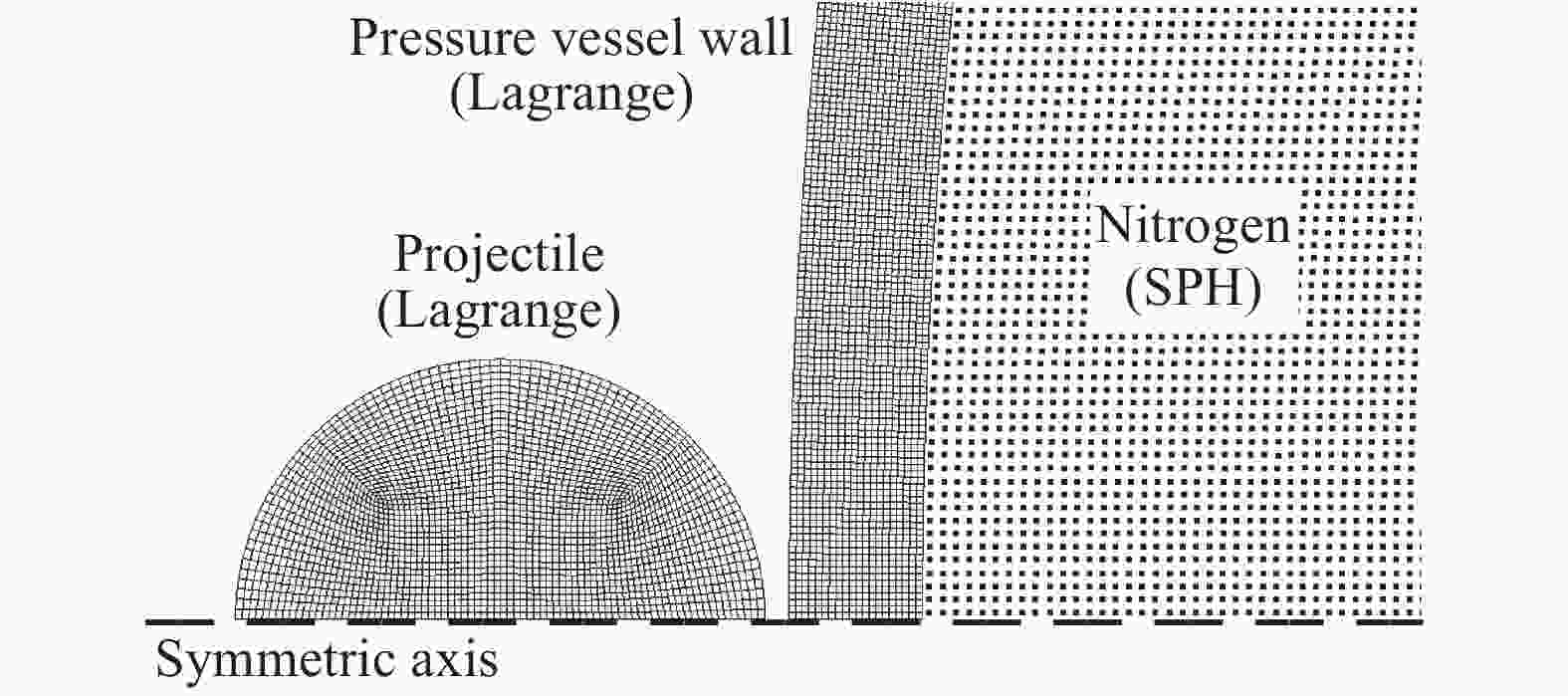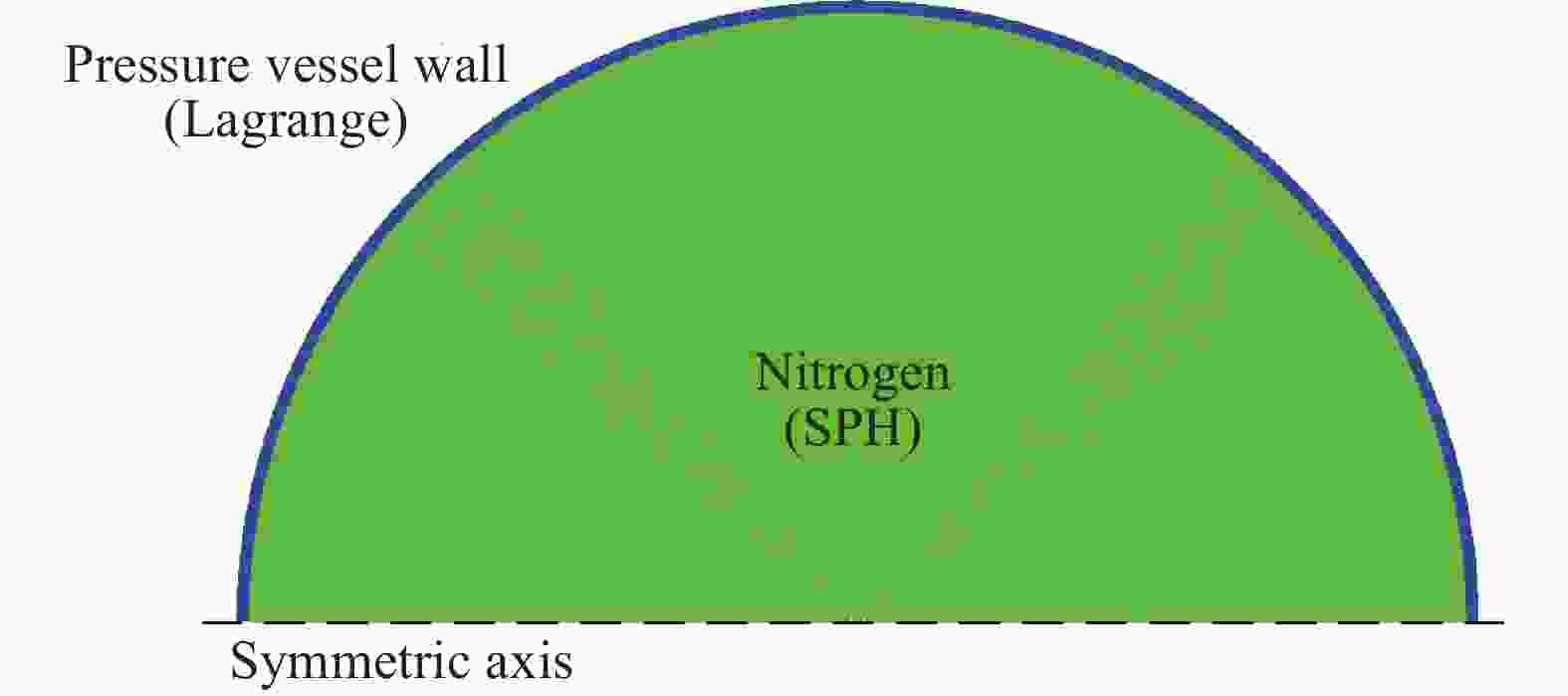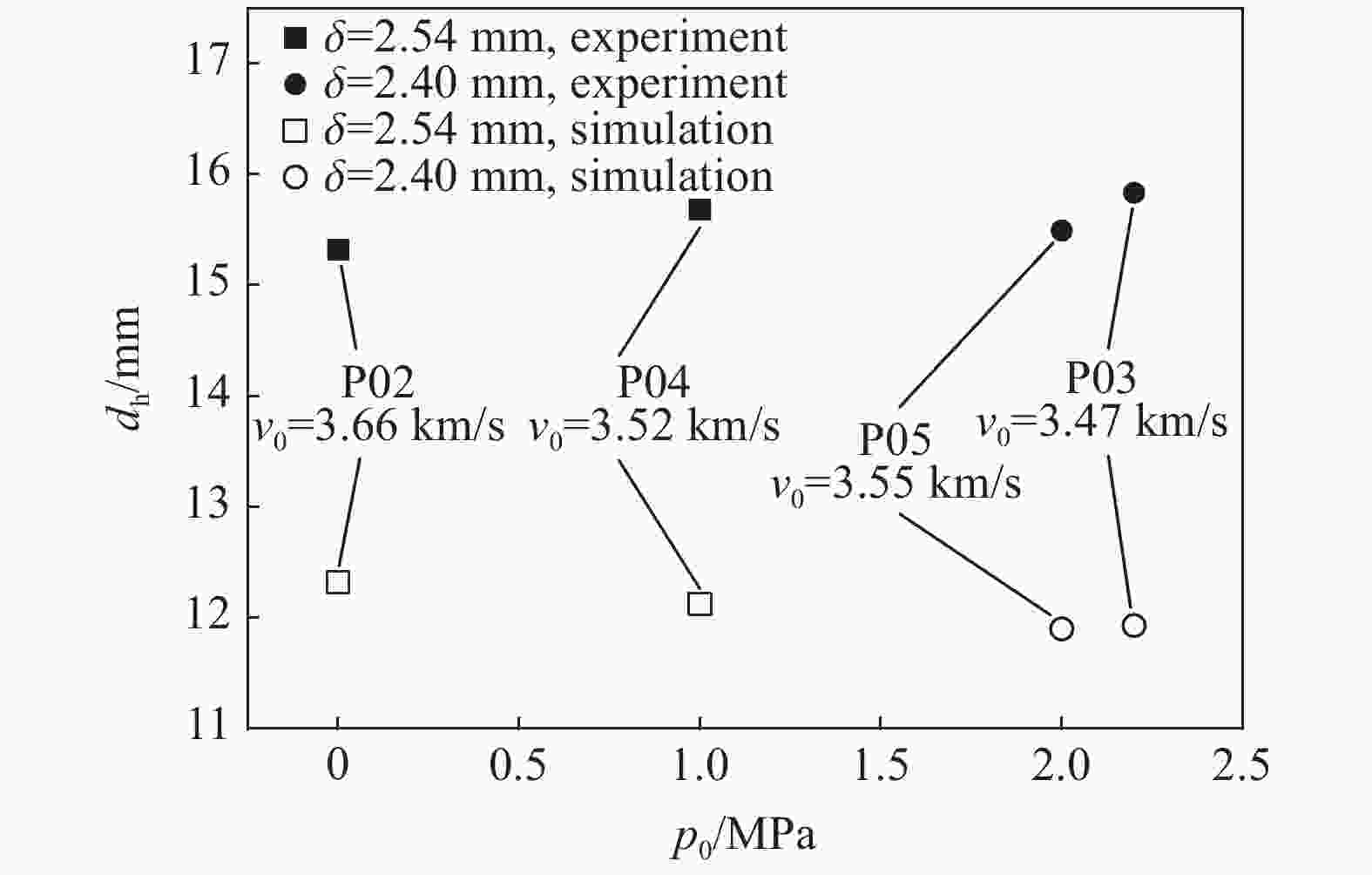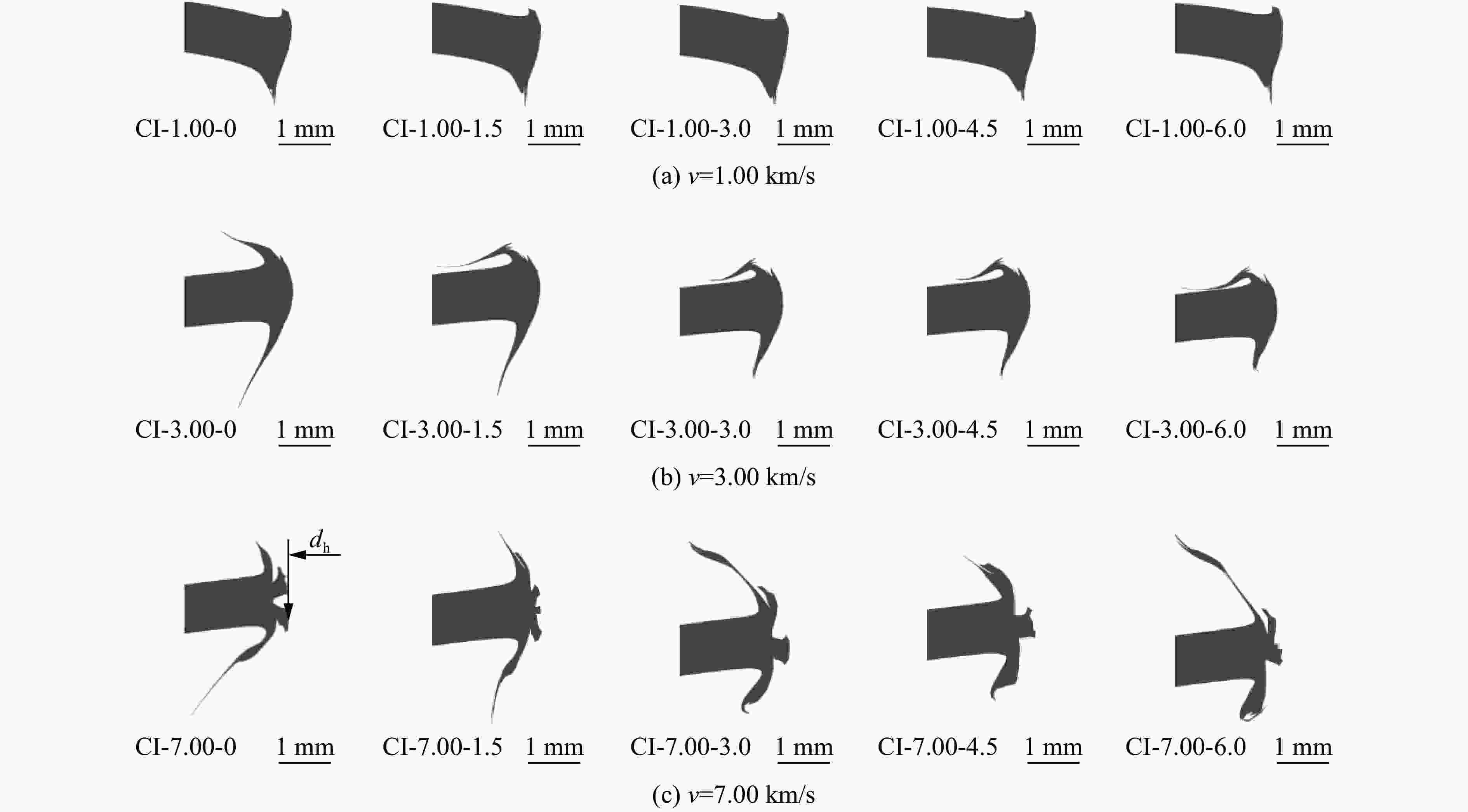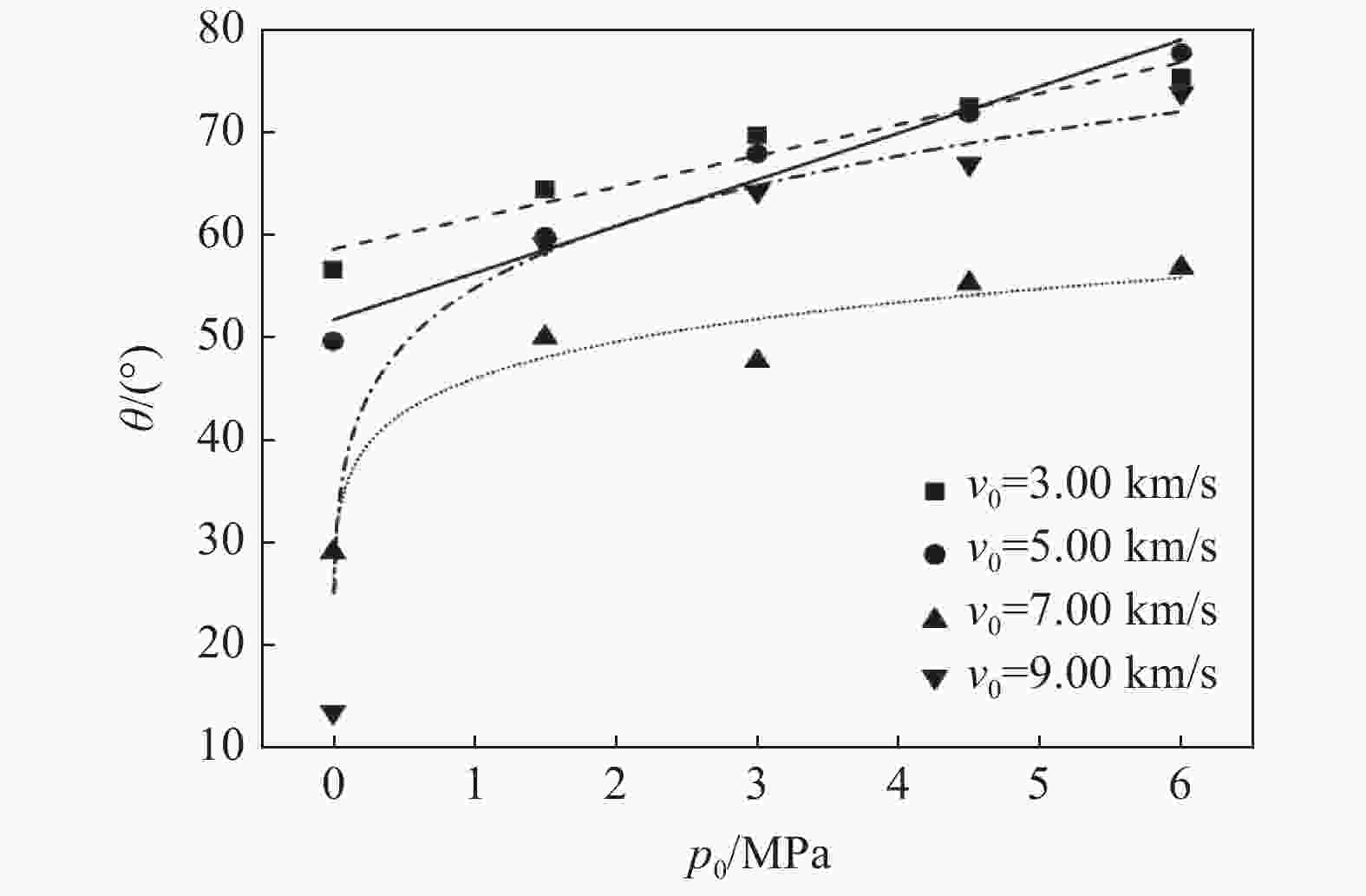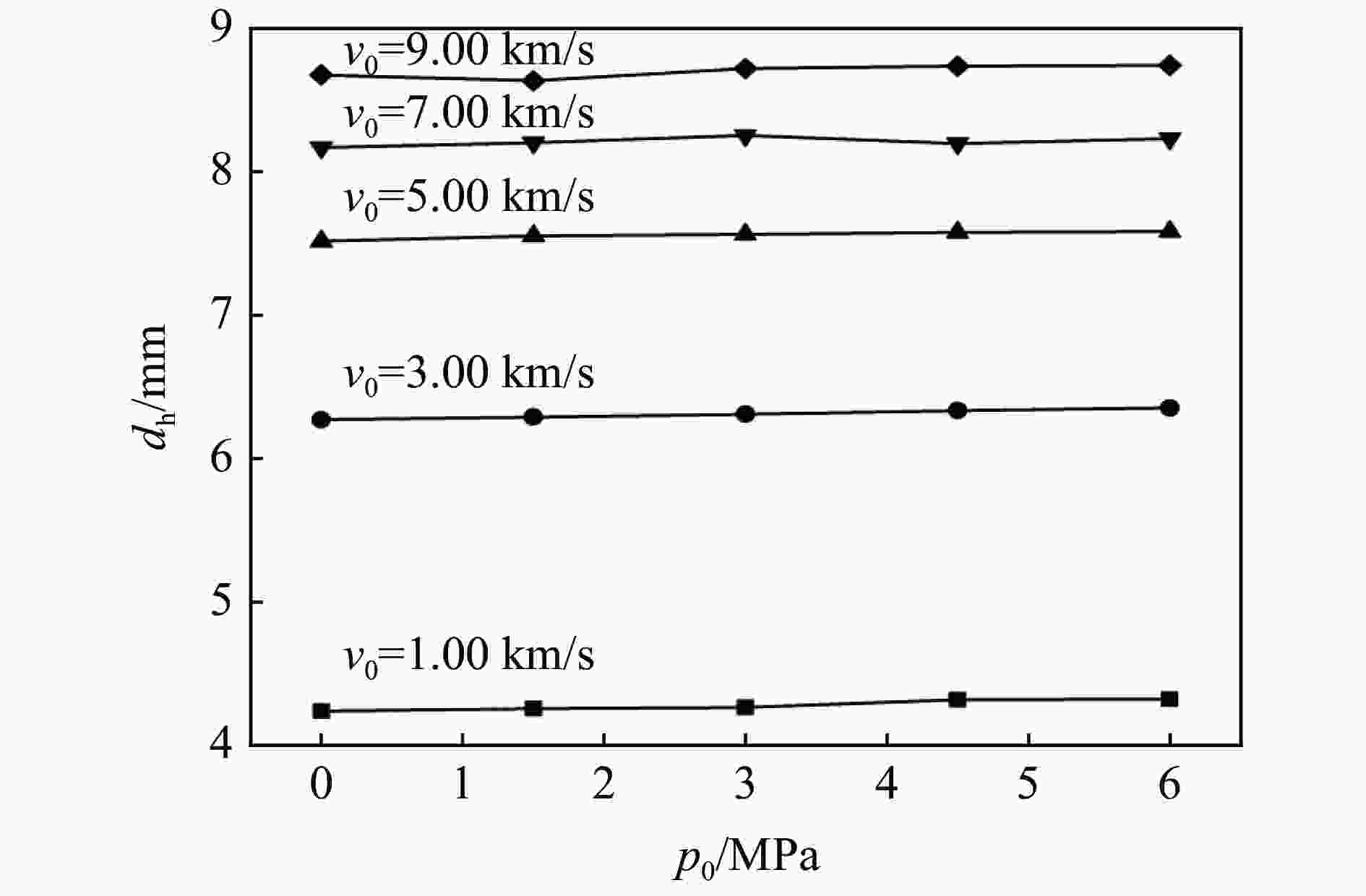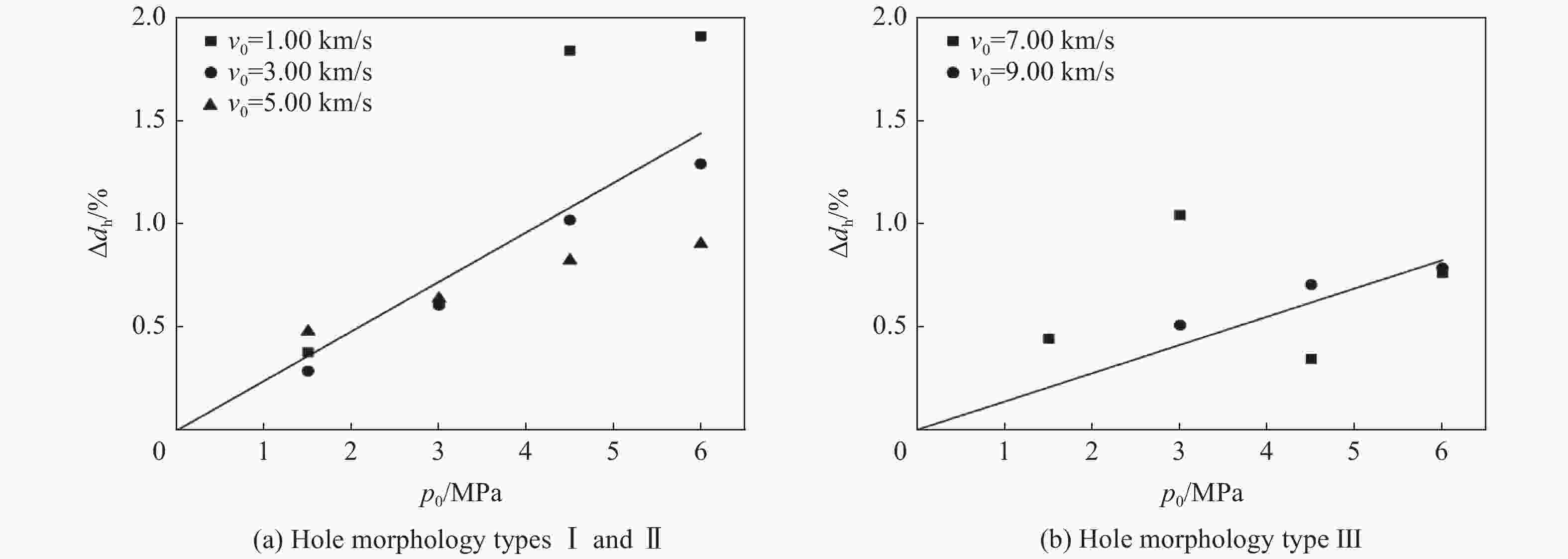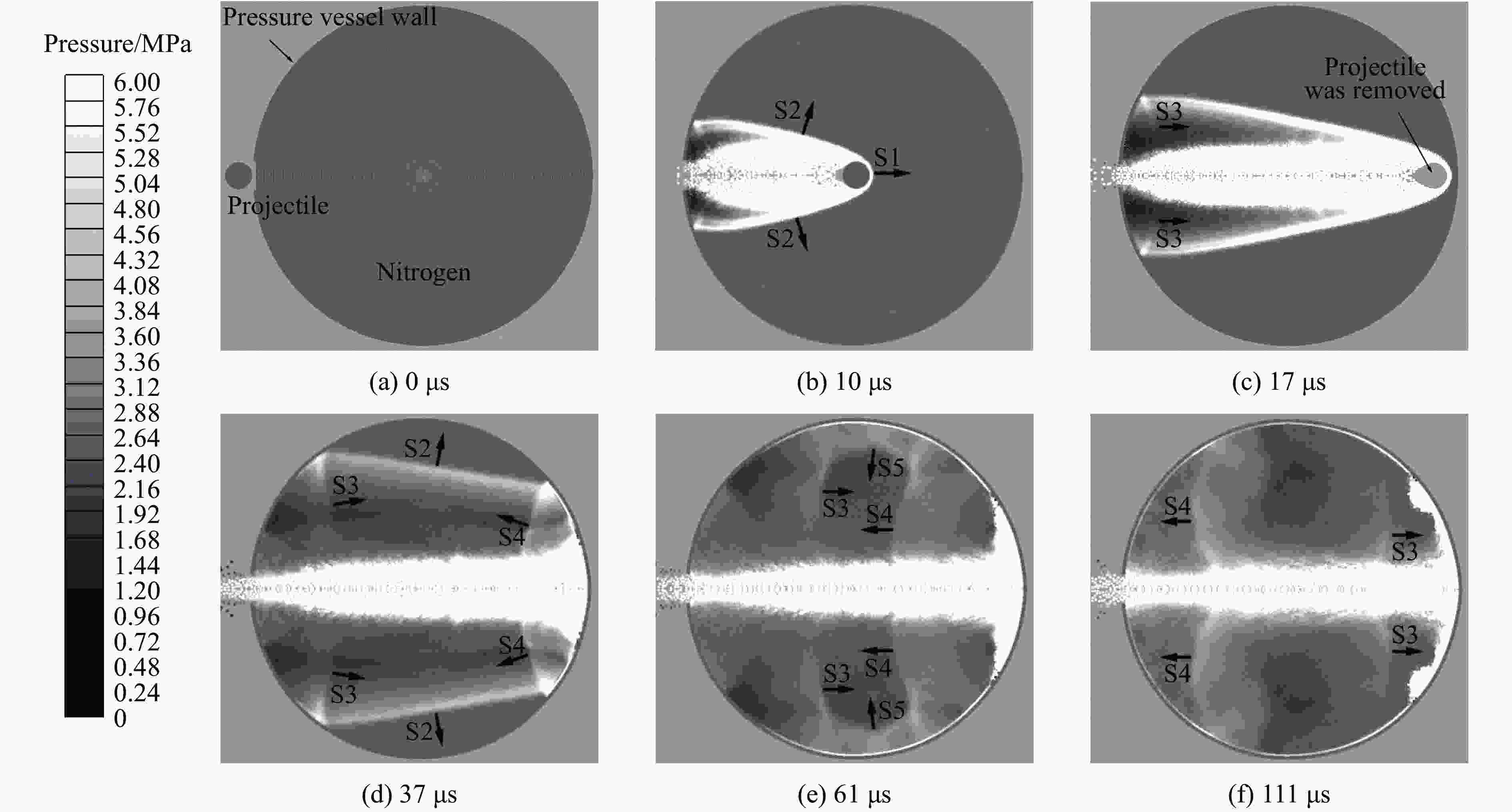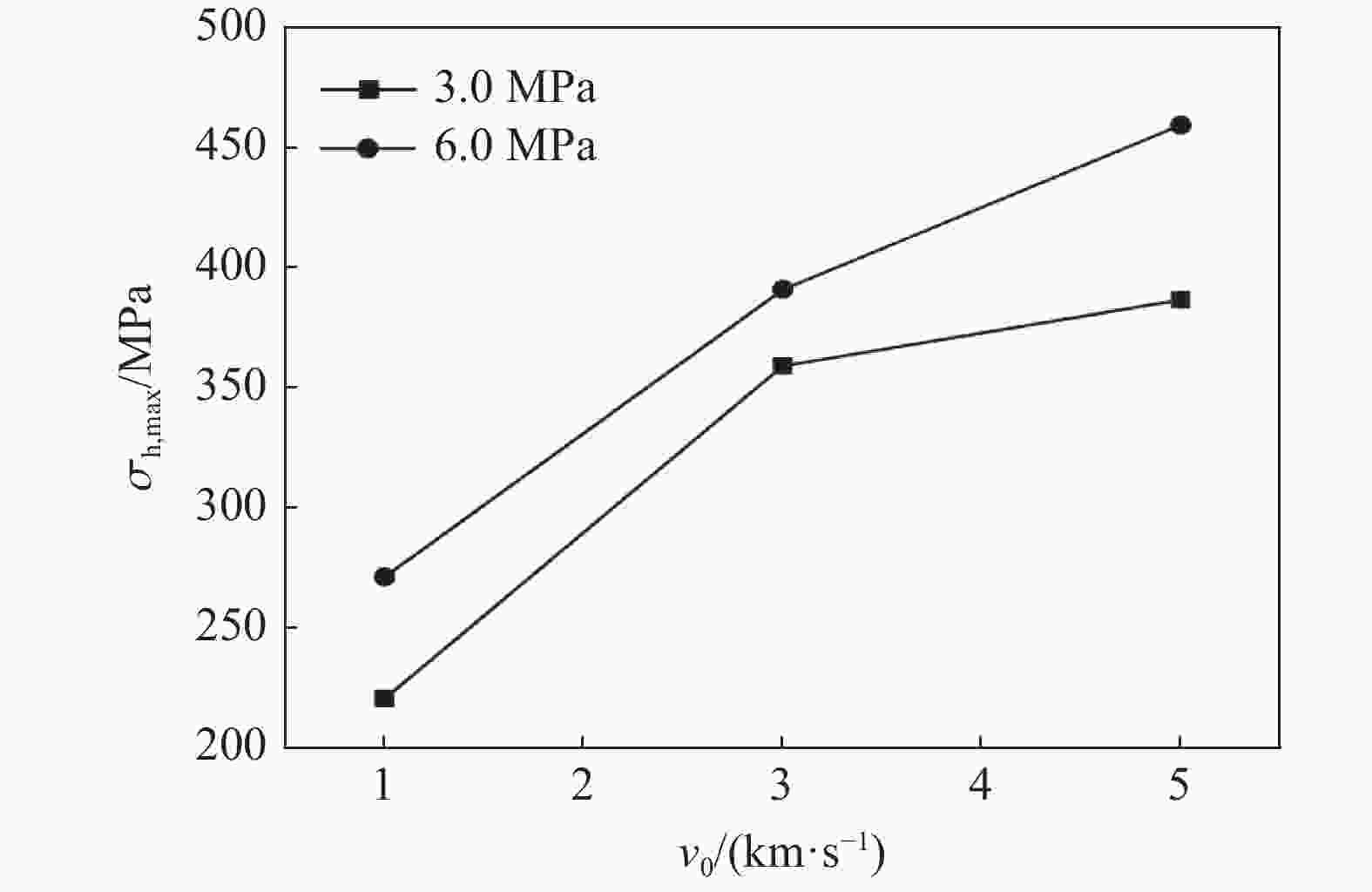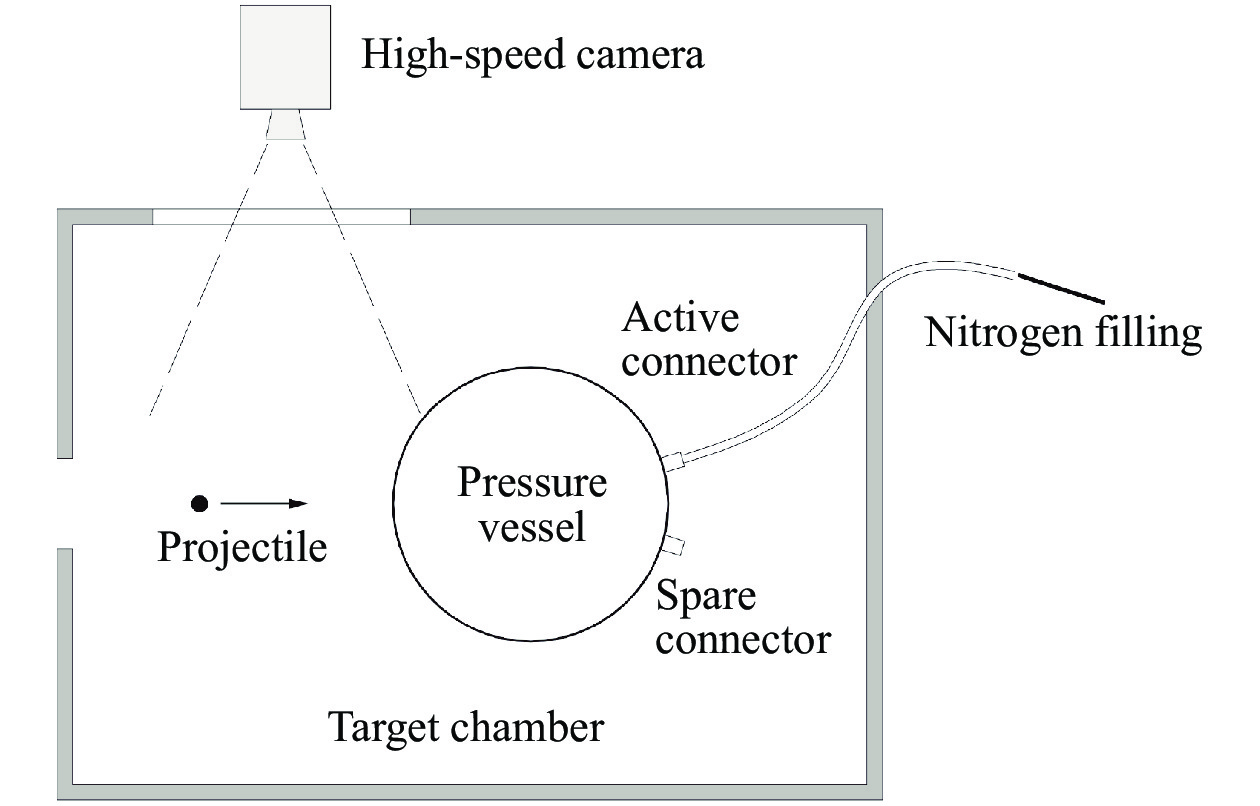Effects of gas pressure on the front wall damage of pressure vessel impacted by hypervelocity projectile
-
摘要: 充气压力容器在超高速撞击下的典型损伤包括穿孔及其边缘的裂纹失稳破坏,会导致气体泄漏或爆炸,内压对容器前壁损伤的影响仍不明确。以不同内压的球形铝合金充气压力容器为研究对象,开展了球形铝合金弹丸超高速撞击实验和数值模拟计算,分析了内充气体压强对前壁穿孔形貌特征、穿孔直径、孔边环向应力等的影响规律和影响机理,讨论了气体冲击波的传播行为及影响前壁穿孔边缘裂纹失稳破坏的机制。结果表明:前壁穿孔边缘内翻边形貌与内压相关,内压越高,弯折程度越轻;穿孔直径与内充气体压强正相关,但气体对孔径的影响远小于容器壁厚及撞击速度的影响;穿孔边缘使裂纹失稳破坏的环向拉应力不仅受到后壁反射冲击波的影响,也与容器壁内应力波的传播有关,与内压成正比。Abstract: The typical damage of gas-filled pressure vessel impacted by hypervelocity projectile includes perforation and crack instability, which lead to gas leakage and explosion. The effect of gas pressure on front wall damage is still unclear so far. Experiments and numerical simulations are reported, in which spherical aluminum gas-filled pressure vessels with different inner pressures were impacted by spherical aluminum projectiles traveling at hypervelocity. A two-stage light gas gun was used to launch an aluminum alloy spherical projectile into the pressure vessel at hypervelocity. The size and cross-section morphology of the perforation with different inner pressures were obtained. According to the various purposes of numerical simulation, two kinds of two-dimensional axis symmetric pressure vessel models were established. The numerical model for type A is a whole model which behaves as the actual pressure vessel. The numerical model for type B included a vessel wall on which there was a stress with same value as inner pressure and non-pressure local gas. The numerical results of perforation diameter and morphology, shock wave propagation, and hoop tensile stress on the hole edge were obtained. The effects of gas on the morphology and diameter of holes in the front wall, as well as the hoop stress on the edge of hole were explored. The mechanism of shock wave in the gas affecting the crack instability in the front wall was discussed and supported by a description of the shock wave propagation. It is shown that the inner flanging morphology on the edge of hole is influenced by the gas pressure. It bends more lightly when the gas pressure is higher. It is shown that the influence of gas pressure on the hole diameter is positive, although it is less obvious than that of wall thickness and impact velocity. The hoop tensile stress is affected by not only the reflected shock wave from the back wall, but also the stress wave propagation in the vessel wall, which is in proportion to gas pressure.
-
Key words:
- hypervelocity impact /
- pressure vessel /
- perforation /
- shock wave in gas
-
表 1 实验参数
Table 1. Experimental parameters
实验 容器内压/MPa 容器壁厚/mm 撞击速度/(km·s−1) P02 <10−4 2.54 3.66 P03 2.2 2.40 3.47 P04 1.0 2.54 3.52 P05 2.0 2.40 3.55 -
[1] SCHÄFER F. Hypervelocity impact testing, impacts on pressure vessels: EMI I-27/01 [R]. Germany: Ernst-Mach Institute, 2001. [2] SCHÄFER F, SCHNEIDER E, LAMBERT M. Impact fragment cloud propagation a pressure vessel [J]. Acta Astronautica, 1997, 39(1): 31–40. DOI: 10.1016/S0094-5765(97)00021-0. [3] 张永, 霍玉华, 韩增尧, 等. 卫星高压气瓶的超高速撞击试验 [J]. 中国空间科学技术, 2009, 29(1): 56–61. DOI: 10.3321/j.issn:1000-758X.2009.01.010.ZHANG Y, HUO Y H, HAN Z Y, et al. Experiment of gas-filled pressure vessel under hypervelocity normal impact [J]. Chinese Space Science and Technology, 2009, 29(1): 56–61. DOI: 10.3321/j.issn:1000-758X.2009.01.010. [4] 周广东, 贾光辉, 泉浩芳. 空间碎片撞击气瓶穿孔孔径预测公式研究 [J]. 航天器环境工程, 2011, 28(1): 11–14. DOI: 10.3969/j.issn.1673-1379.2011.01.002.ZHOU G D, JIA G H, QUAN H F. The penetration hole size prediction for pressure vessel under impact of space debris [J]. Spacecraft Environment Engineering, 2011, 28(1): 11–14. DOI: 10.3969/j.issn.1673-1379.2011.01.002. [5] 庞宝君, 盖芳芳, 管公顺. 高速撞击充气压力容器前壁损伤数值模拟 [J]. 中国空间科学技术, 2010, 30(4): 76–82.PANG B J, GAI F F, GUAN G S. Numerical simulation on the damage of front side of gas-filled pressure vessels due to hypervelocity impact [J]. China Space Science and Technology, 2010, 30(4): 76–82. [6] IGOR Y T, SCHÄFER F. Analysis of the fracture of gas-filled pressure vessels under hypervelocity impact [J]. International Journal of Impact Engineering, 1999, 23: 905–919. DOI: 10.1016/S0734-743X(99)00134-7. [7] SMIRNOV N N, KISELEV A B, NIKITIN V F. Fragmentations caused by hypervelocity collisions of debris particles with pressurized vessels [C]// Proceeding of the 3rd European Conference on Space Debris. Darmstadt, Germany: ESOC, 2001: 615–620. [8] 盖芳芳. 空间碎片超高速撞击下充气压力容器破损预报 [D]. 哈尔滨: 哈尔滨工业大学, 2010: 24–28.GAI F F. Prediction of damage and failure of gas-filled pressure vessels under space debris hypervelocity impact [D]. Harbin: Harbin Institute of Technology, 2010: 24–28. [9] Autodyn user’s manual revision 6.0 [S]. Concord, USA: Century Dynamics Incorporated, 2005. [10] 张庆明, 黄风雷. 超高速碰撞动力学引论[M]. 北京: 科学出版社, 2000: 110–111. [11] PIEKUTOWSKI A J. Formation and description of debris cloud produced by hypervelocity impact: NASA CR-4707 [R]. USA: Marshall Space Flight Center, 1996. -






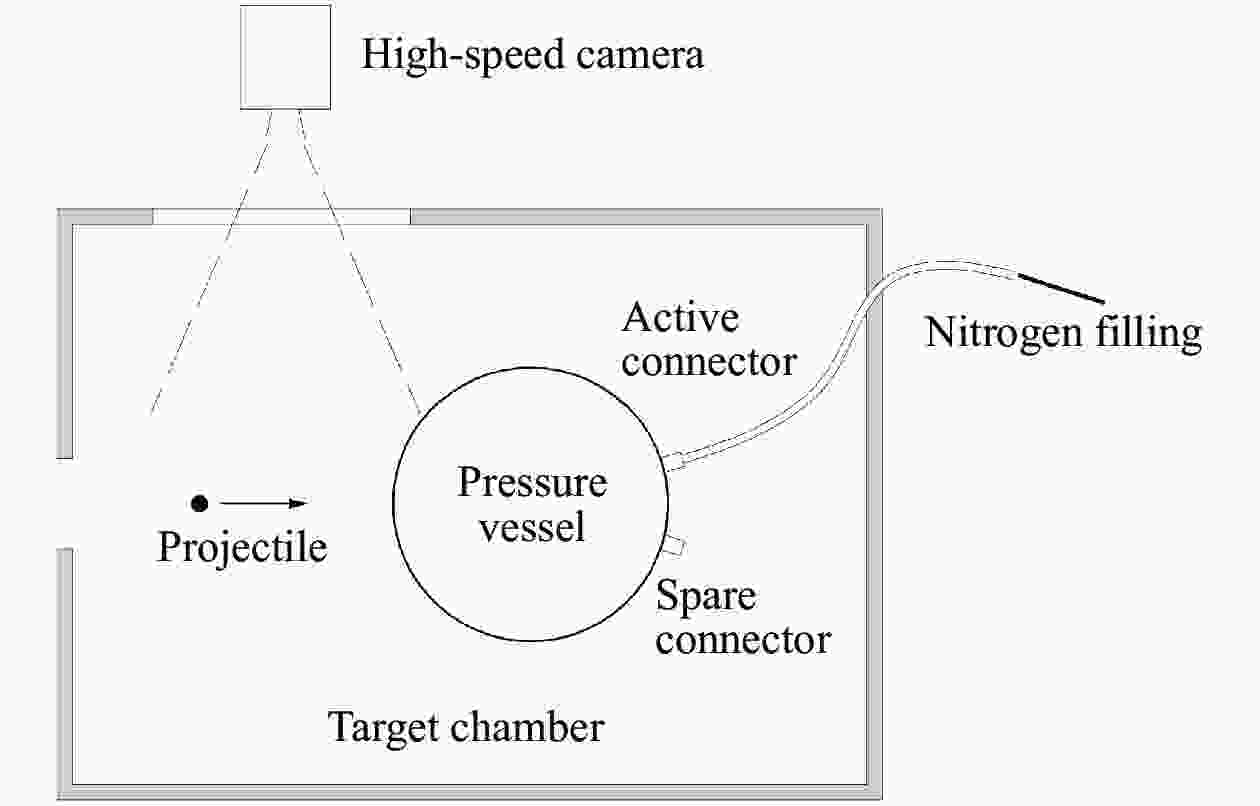
 下载:
下载:
